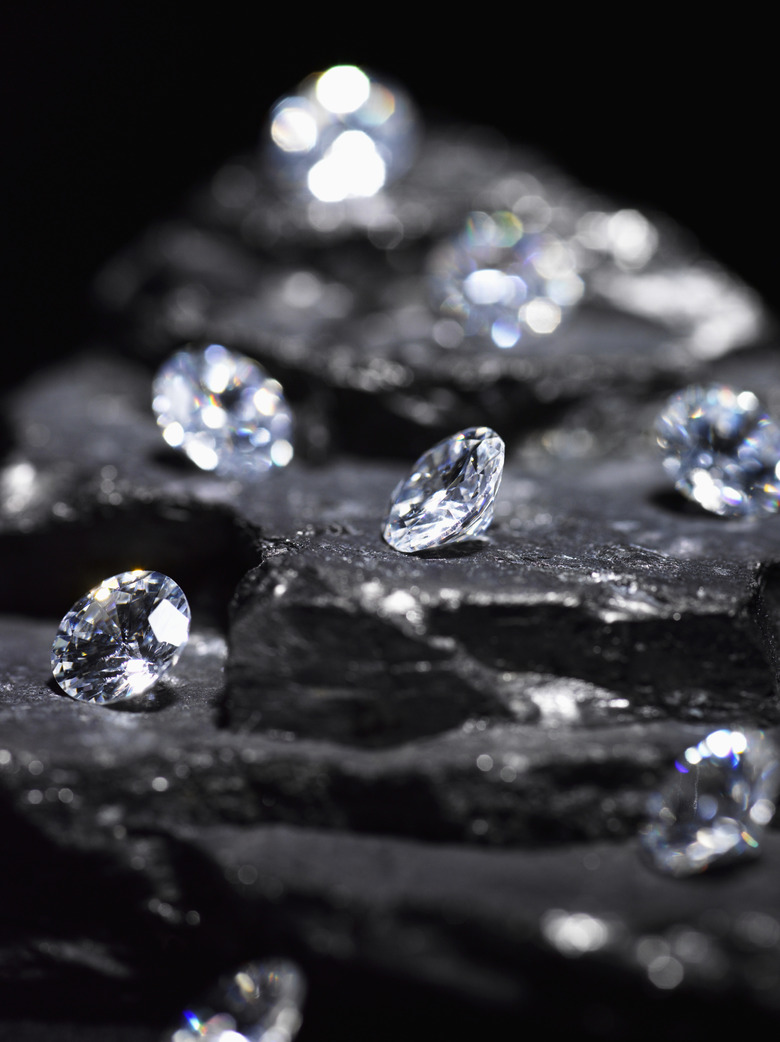Examples Of Carbon Molecules That Have A Role In Everyday Life
The word "carbon" was well-ingrained in everyday language long before the terms "carbon footprint" and "carbon emissions" became popular in the early 21st century. The word "carbonated" almost certainly conjures up clear thoughts and sensations in your mind, along the lines of fizzy liquid.
But despite how often you hear the word "carbon" (along with suspiciously similar words like "carbohydrate"), you may not have stopped to consider the depth of carbon's everyday presence, and the number of ways different carbon molecules manifest themselves in the mundane but obligatory tasks of life.
What Is Carbon?
What Is Carbon?
Carbon is an element, or unique type of atom, on the periodic table of elements. It is numbered 8 (of 118 total, as of 2020) on the periodic table of elements. This means it has eight protons, the one trait that makes it unique. It also has eight neutrons and electrons.
Carbon being seemingly everywhere in nature and industry is attributable to this element's versatility in terms of forming covalent bonds. Carbon binds readily to the other vital elements in living things, including hydrogen (H), oxygen (O) and nitrogen (N),
What Is a Molecule?
What Is a Molecule?
A molecule is any combination of atoms joined by chemical bonds (covalent, ionic or metallic). It is the smallest unit of a substance that retains the chemical and physical properties of that substance, regardless of the constituent atoms. For example, pure water contains a combination of hydrogen and oxygen atoms, but only H2O (two hydrogens bonded to one oxygen, always in this ratio) is water.
- A molecule consisting of more than one element type is a compound, for example, H2O or CN.
Examples of Everyday Carbon Molecules
Examples of Everyday Carbon Molecules
Fossil Fuels: Oil (petroleum) is actually a mixture of different hydrocarbons, which are long chains of C bound only to H molecules. When these are burned, the many C−H bonds release enormous amounts of energy. The carbon dioxide that is liberated is a molecule that appears in many human contexts (see below).
Carbon Monoxide: CO is a colorless, odorless gas that can lead to death by asphyxiation if inhaled in sufficient amounts. It does this by competing with oxygen for binding sites on the O2-carrying blood cell hemoglobin and since hemoglobin actually binds to CO with more affinity than it does to O2.
Carbon Dioxide: CO2 (O=C=O) is a by-product of human metabolism and respiration, and is considered waste. But the trash of one is the treasure of another, and plants need CO2 to make food, grow and release O2 for the use of aerobic organisms. Despite the molecule's necessity, its role as a greenhouse gas in climate change has not earned CO2 many recent fans. (Under pressure, it's also what puts the fizz in soda.)
Ethanol: C2H5OH is the type of alcohol found in alcoholic beverages and is also known as ethyl alcohol. An alcohol is a certain type of carbon molecule with one or more hydroxyl (-OH) groups; other common alcohols are isopropanol or isopropyl alcohol (rubbing alcohol) and methanol (wood alcohol).
Glucose: C6H12O6 is the carbon molecule that is ultimately extracted from food before entering your body's cells. It is a component of sucrose (table sugar), which consists of one glucose molecule joined to a fructose (fruit sugar) molecule. People with diabetes measure their blood glucose levels regularly with electronic sampling equipment.
**"Macros"**: The three macronutrients you hear about at the gym and in certain Instagram circles — carbohydrates ("carbs"), proteins and fats — all consist mainly of carbon atoms. Protein contains nitrogen in addition to carbon, hydrogen and oxygen atoms.
Cite This Article
MLA
Beck, Kevin. "Examples Of Carbon Molecules That Have A Role In Everyday Life" sciencing.com, https://www.sciencing.com/examples-carbon-molecules-role-everyday-life-12435/. 14 February 2020.
APA
Beck, Kevin. (2020, February 14). Examples Of Carbon Molecules That Have A Role In Everyday Life. sciencing.com. Retrieved from https://www.sciencing.com/examples-carbon-molecules-role-everyday-life-12435/
Chicago
Beck, Kevin. Examples Of Carbon Molecules That Have A Role In Everyday Life last modified March 24, 2022. https://www.sciencing.com/examples-carbon-molecules-role-everyday-life-12435/
